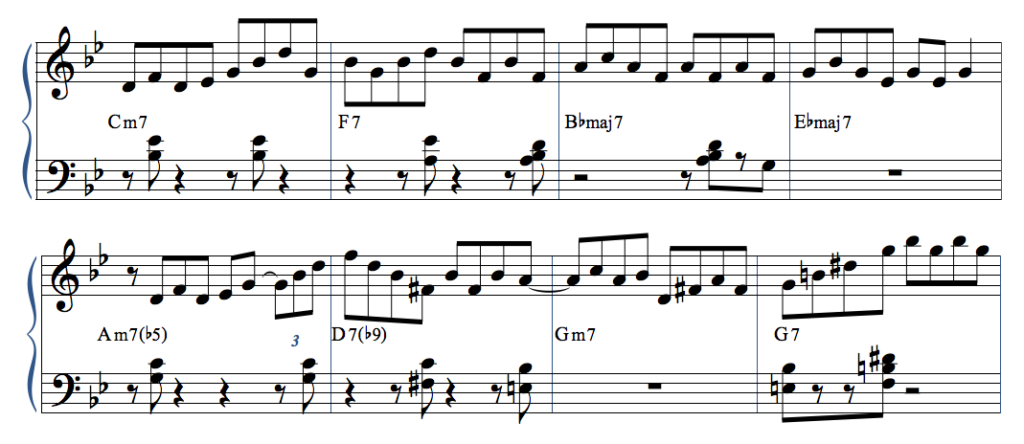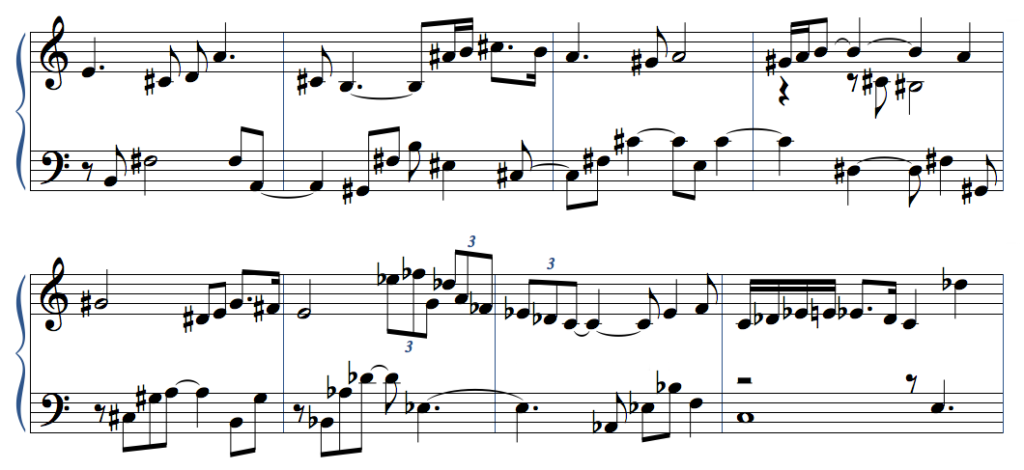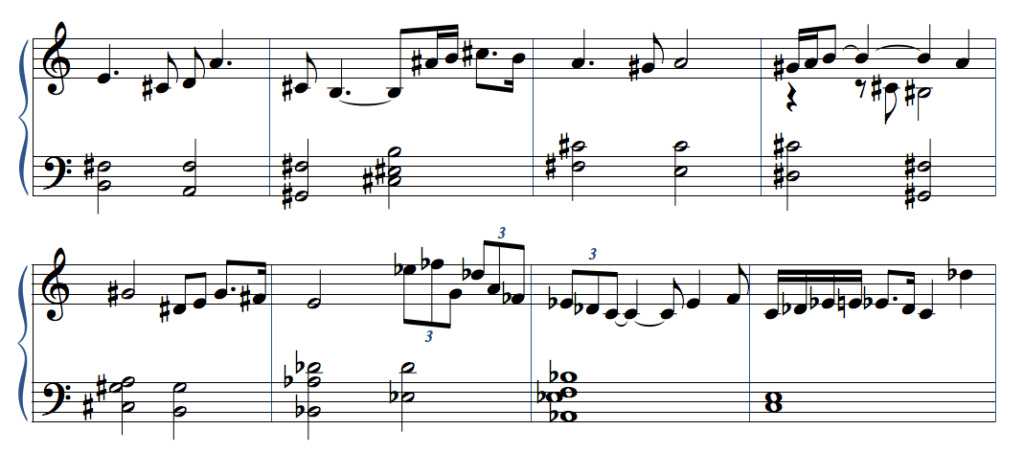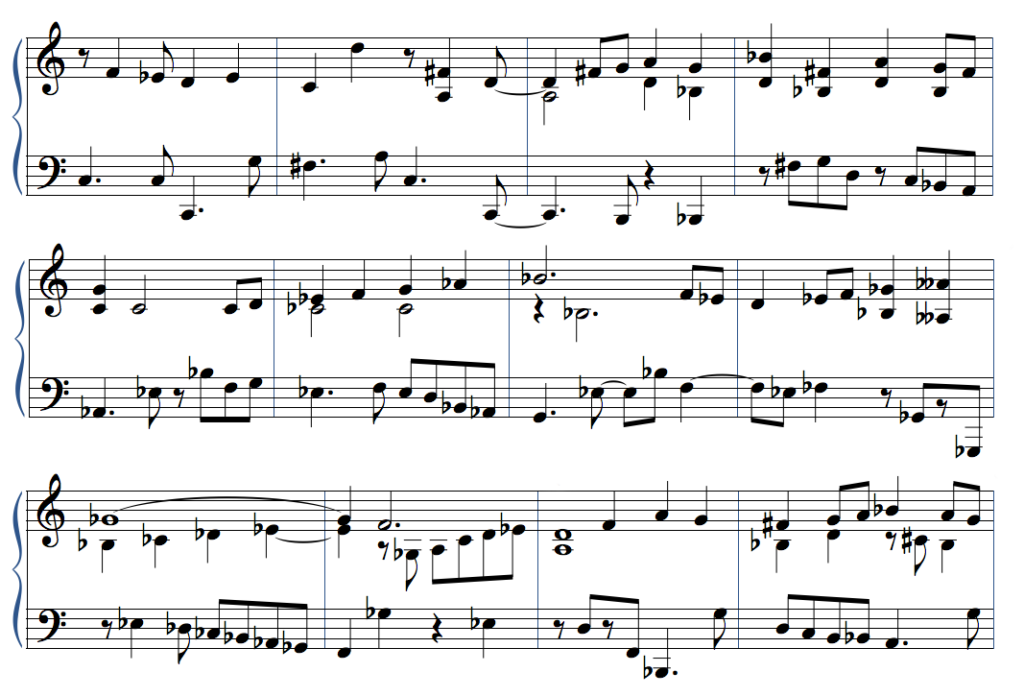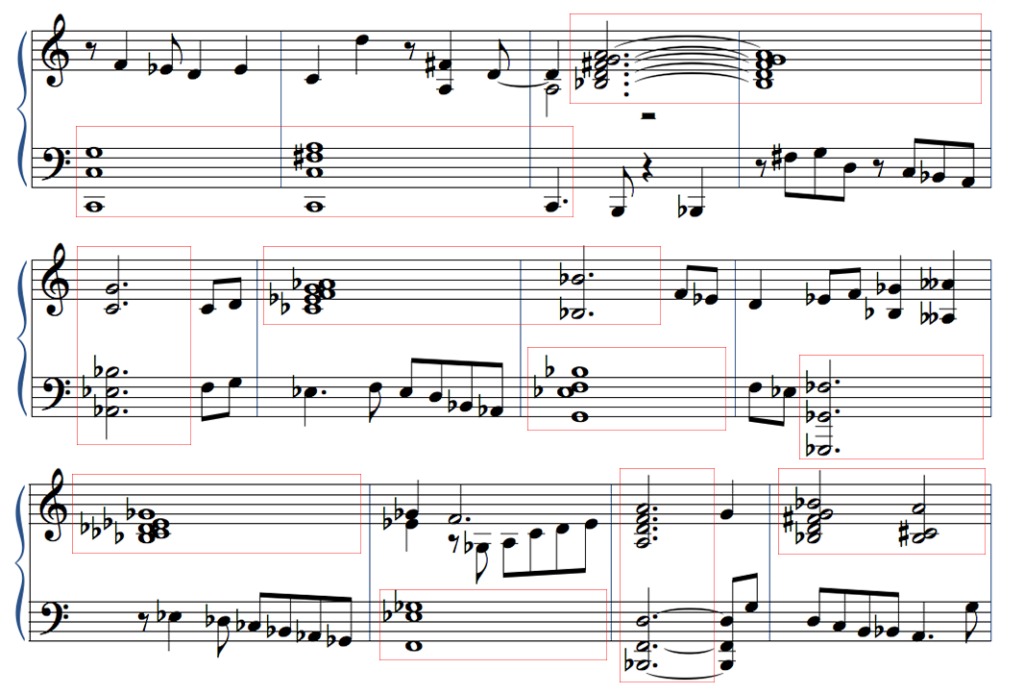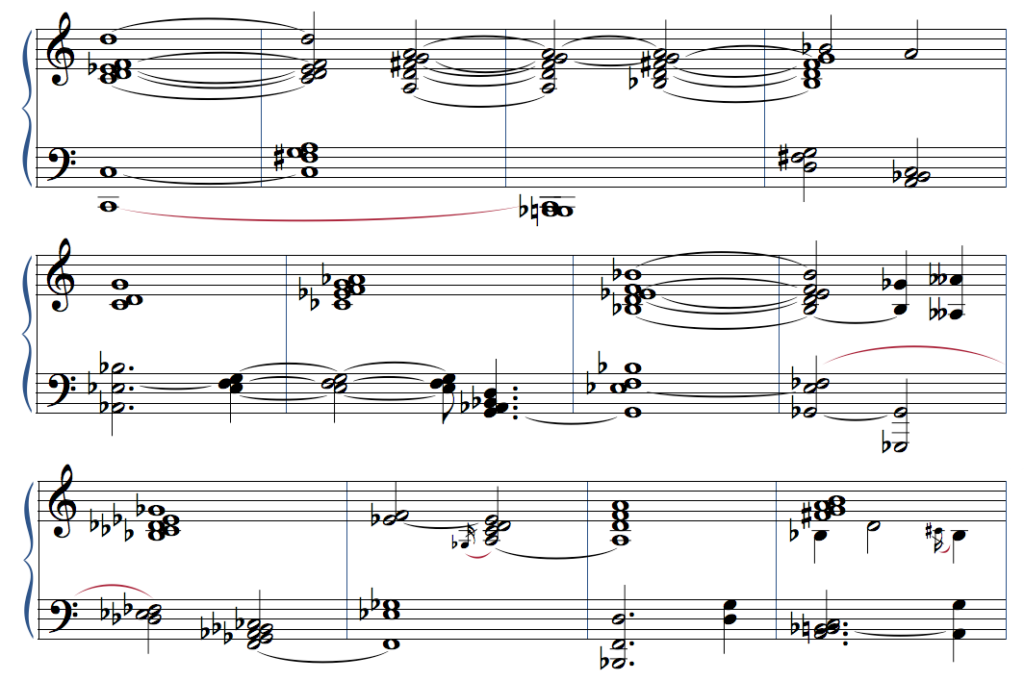Active & Passive Relationships at the Piano
I think it’s important to acknowledge some of the relationships that make right- and left-hand independence/counterpoint a complex topic. From this, I’ll be able to design better exercises that give a better foundation for contrapuntal playing, including playing bass lines.
I’ve identified at least five areas worthy of exploration. Some of them are more complex than others, and some overlap in practice.
–
- Active & Passive Relationships
- Spatial Relationships
- Directional Relationships
- Functional Relationships
- Rhythmic Relationships
–
Active & Passive Relationships
One way to interpret hand independence is as a relationship between active and passive playing.
Playing passively can take on many forms, but generally, the hand is on autopilot, and uses muscle memory, larger chunks of notes, familiar patterns, and higher levels of abstraction so that attention can be focused elsewhere. Playing actively is characterized by melodic and rhythmic inventiveness and can’t be easily simplified into logical patterns.
Under this framework, complete hand independence is impossible the same way multi-tasking is impossible. Immediate focus is limited to one channel. Of course, it’s possible to participate in two tasks simultaneously, but in that case, those tasks will be “redundant” or “chunked” in some way, giving the illusion of split attention. A good summary of the issue can be found in this article, called “Division of Attention: The Single-Channel Hypothesis Revisited.” Here’s a quote:
“There is no doubt that people can carry out two complex tasks at the same time. What is less clear, however, is whether the information processed in the dual-task situation could even exceed a subject’s single-task processing capacity when both single and dual tasks are being performed at their maximum sustainable rates. There are two reasons for this uncertainty. First, the complex tasks used in dual-task studies that claim to demonstrate parallel processing are often so redundant and highly overlearned that it is difficult to quantify the rates of information being processed in either single- or dual-task conditions. Secondly, it is possible that single-task conditions in studies of this kind do not fully load the subject’s channel capacity; in which case the appearance of superior performance in dual-task conditions may be illusory.”
The improvising pianist’s illusion is sound and performance. Pianists can make two voices sound independent, but that doesn’t equate cognitive and physical independence.
Let’s look at some examples. Here’s Bill Evans soloing on Autumn Leaves, from Portrait in Jazz:
This example represents most circumstances for improvising jazz pianists who play in ensembles – the left hand plays one-handed rootless voicings and the right hand improvises melodically. Playing chords passively in the left hand like this becomes so intuitive that the right hand develops an idealized freedom for improvisation. In this setting, achieving melodic and rhythmic inventiveness in the right hand is the primary goal. It’s the quintessence of active playing.
Solo piano is where you hear more diverse active/passive relationships. Because the left hand’s function is more complex, pianists need to develop more interesting passive vocabulary. The most discernable examples are when the left hand plays short, structured and repetitive patterns while the right hand improvises. These chunked patterns free up the right hand, allowing it to achieve melodic and rhythmic inventiveness.
(Here’s) a good example by Keith Jarrett, where the left hand is restricted to playing this:
The division between active and passive playing isn’t always this clear. In more contemporary and contrapuntal settings, improvising pianists may be juggling the active and passive voices between their hands. In some cases, it sounds like they’re being juggled, but really aren’t. Here’s an excerpt from John Taylor playing Close to Mars from Songs and Variations:
In this example, the left hand is using very conventional chord structures. Arpeggiation and rhythmic interplay creates the illusion of active playing. A transcription on a higher order may look like this:
Here’s another excerpt from Fred Hersch playing Duet from Songs Without Words:
There are two ways to interpret this improvisation. The first is as a juggling of passive and active playing.
Both hands play active passages that are rather inventive and can’t be simplified into logical patterns. Likewise, both hands play passive passages that can be chunked into conventional voicings and hand positions. The duration and contents of these passive chunks may be somewhat relative, but here are my suggestions, marked with red boxes.
The problem with interpreting this as an interplay of passive and active playing is that when improvising, pianists will use simplified hand clusters and higher levels of abstraction in both hands simultaneously. In the analysis above, this is what seems to be happening in measures five, seven and eleven – the red boxes overlap and the hands share “passive” roles. Further, my divisions between active and passive playing are based on mistaken concepts of “melodic and rhythmic inventiveness.” In keeping with the theme of these articles, you can’t separate the concept of “active, inventive melodies” from the physical gestures required to play them. Nor can you separate the concept of “passive, conventional voicings” from their corresponding gestures and hand positions. They’re equal partners.
This suggests a more holistic relationship in three parts: the left hand, the right hand, and the hands together. Both hands play passively to create one, active voice. This is like listening to two different radio shows simultaneously. As you focus on one, you’ll lose the details and subtleties of the other. But you can also listen to both, passively, as one overall experience. Subtleties will be lost, but you’ll retain surface understandings.
With this in mind, an analysis of the Fred Hersch solo could look like this:
This can be cleaned up and visualized like this:
With the above clusters revealed, we can imagine how Fred Hersch’s hands may have been using “redundant” or “chunked” tasks between the two hands. Of course, this analysis is based on my fingerings, not Fred’s. I used what I believed to be the most optimal for range of motion. From this, we can make a few observations:
Right hand:
- The thumb only travels between C and Abb (5 semitones)
- There are 12(ish) shifts in hands positions
- When the harmony changes, the clusters morph gradually, often around common tones
- Clusters mostly span an octave or less
- The right hand doesn’t travel very far distances
Left hand:
- The thumb travels between A and Gb (15 semitones)
- There are 17(ish) shifts in hand positions in the left hand
- Changes are more frequent, and span a wider range on the piano
- The width of clusters range from a 10th (measures 7 and 11) to a 3rd (measures 3 and 4)
- Hints of stride piano, mixed with mid-range, open voicings
There are many ways to analyze, interpret and notate these abstract, deep structures. I won’t claim that this is the best analysis, and admittedly, there are missing layers between the surface structure and deeper structures. But this isn’t meant as an exercise in analysis and notation. This is a starting point for understanding a spectrum of active and passive playing and how pianists give the illusion of split attention. When it comes to counterpoint and hand independence though, this only scratches the surface. Even with an understanding of this complex active/passive relationship, there are still many questions about how pianists improvise with both hands.
In the next articles, I’ll explore some other physical relationships that inform a pianist’s improvisations. This includes spatial, directional, horizontal/vertical, functional and rhythmic relationships.

